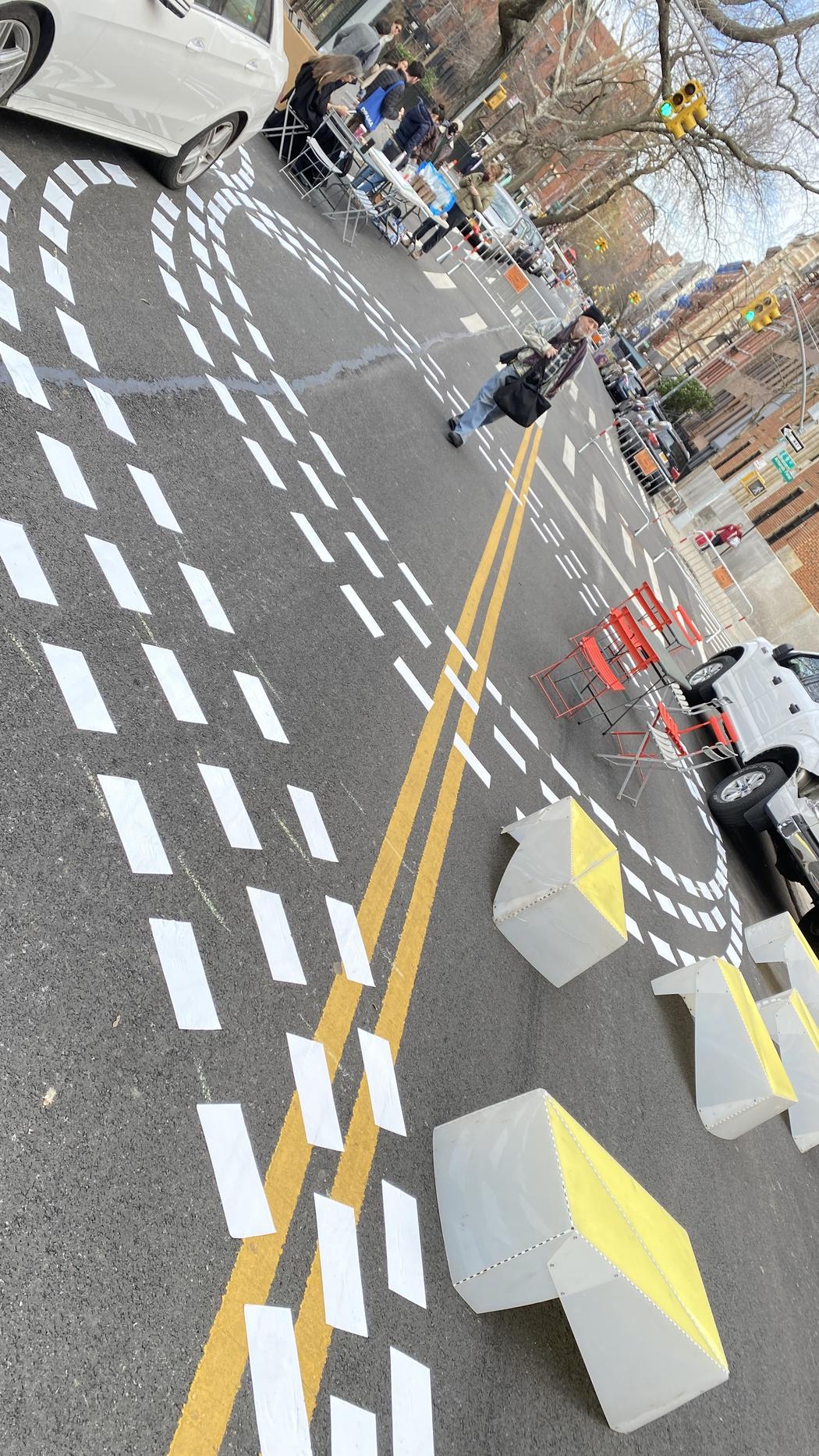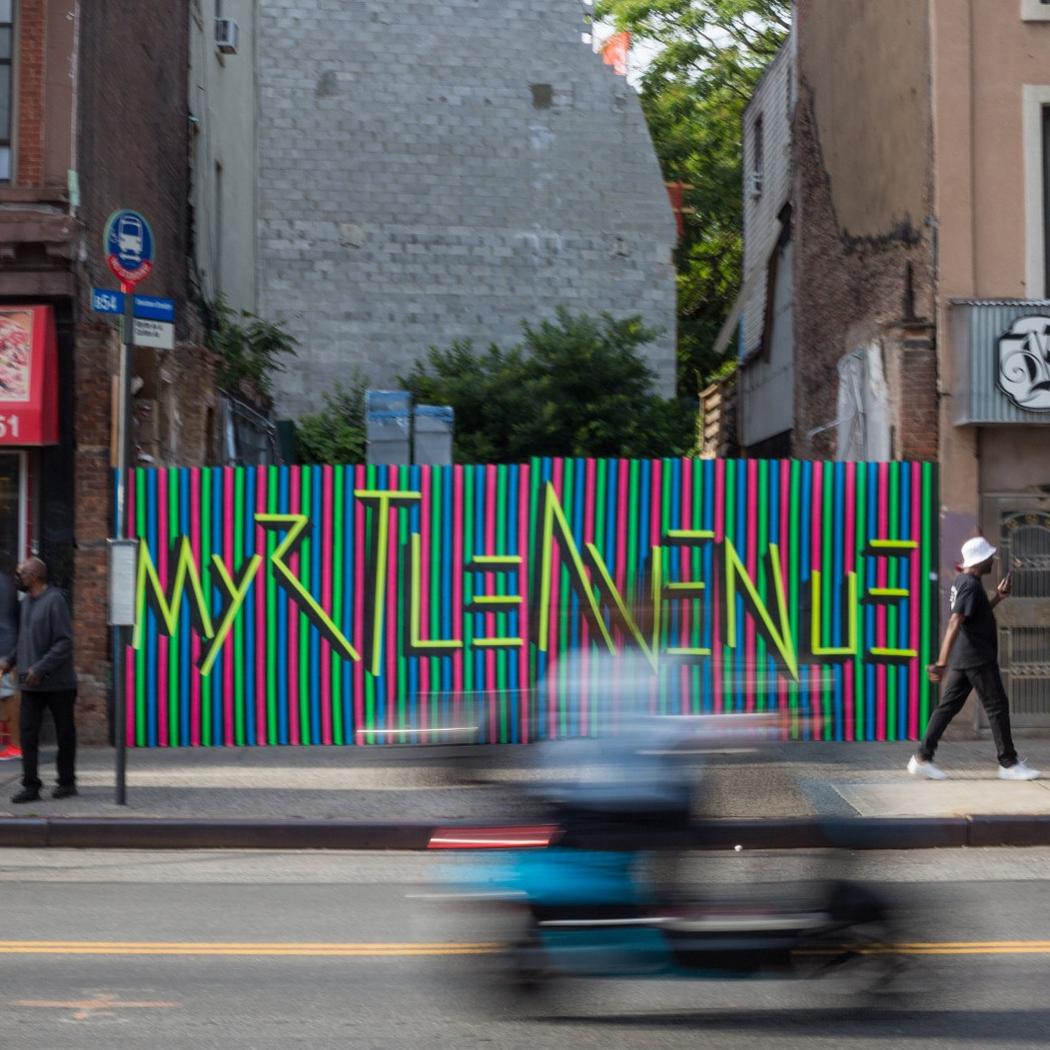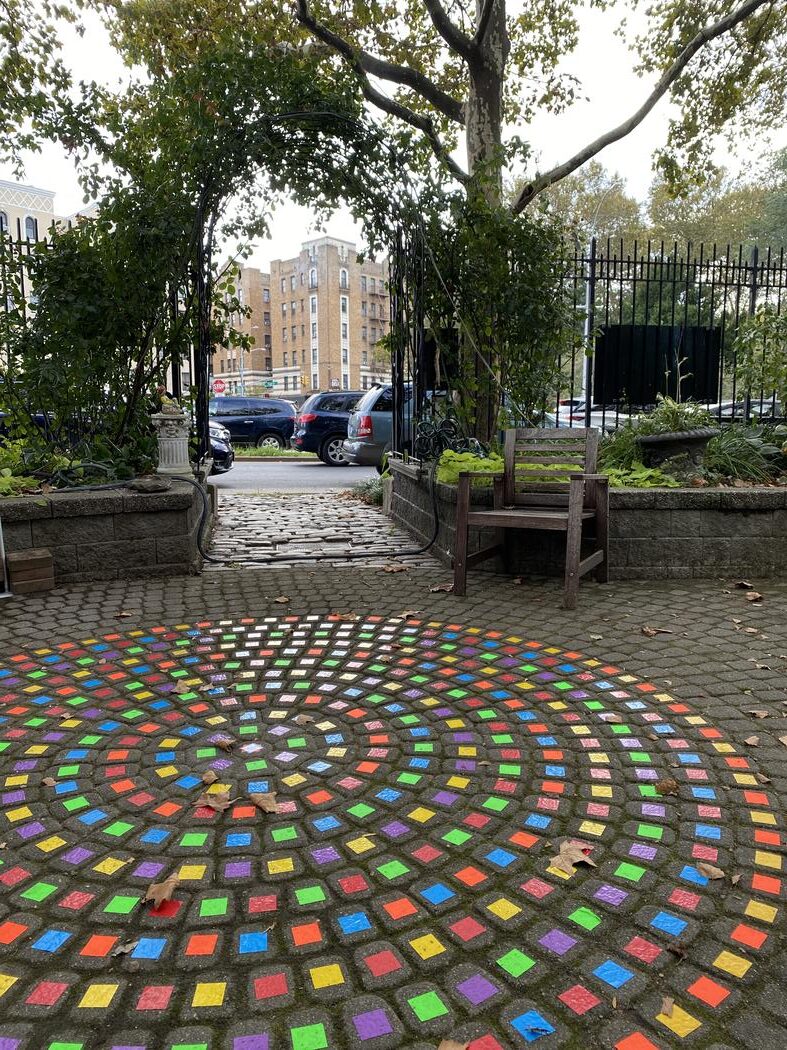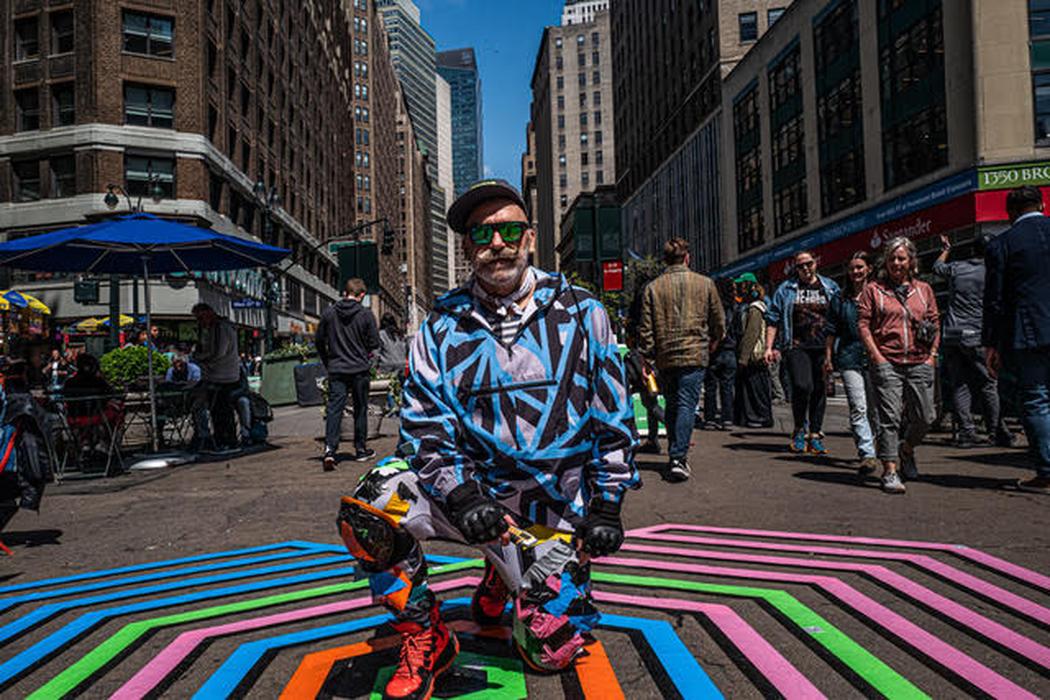KUKI GO (Rubén Alejandro Gómez)
Your education: Graphic Design at UBA (Universidad de Buenos Aires)
Describe your art in three words: Immersive. Ephemeral. Playful.
Your discipline: Interactive Tape Art and Urban Intervention with a focus on site-specific installations in public space, incorporating elements of optical design, tactical urbanism, and emerging digital technologies.
Website | Instagram
Your journey began with two rolls of tape. Do you remember the very first piece you created—and what made you continue?
Yes, I remember it clearly. It was during a slow moment in my life, and I happened to have two rolls of tape on hand, one neon and one black. I started experimenting on my apartment wall, just playing with lines and contrast. That first piece wasn’t anything grand, but it sparked something. The simplicity of tape as a material, combined with how immediate and graphic it could be, felt powerful. It wasn’t planned or polished, it was pure improvisation. That freedom, the directness of the medium, and how quickly it transformed the space kept me going. From there, it moved to the streets. I realized I could take this accessible material and start conversations in public space. It became a way to draw people in, reshape their surroundings for a moment, and then vanish, like a visual interruption in their daily routine.
How has your background in graphic design and event production influenced your Tape Art installations?
It’s influenced everything, honestly. Graphic design taught me how to work with composition, balance, and color in a clear, intentional way. I’m always thinking about how the eye moves through space, how lines guide attention, and how contrast can create depth or energy. That training really sharpened my visual instincts. Event production added a different layer. It gave me a sense of how people move through environments, how to build an experience, not just an image. I approach each tape installation like a temporary event. I think about flow, timing, and how people will encounter the work. The logistics, the improvisation under pressure, the quick setups, that all comes from the event world. So in a way, my art is a mix of both: a visual composition that’s also a live, in the moment experience.
 KUKI GO (Rubén Alejandro Gómez) | Kuki Go Winter Fest | 2020
KUKI GO (Rubén Alejandro Gómez) | Kuki Go Winter Fest | 2020
Many of your works play with optical illusions and perspective. What role does geometry and spatial rhythm play in your artistic process?
Geometry is at the core of how I build my installations. I’m drawn to sharp lines, angles, and repetition because they create a kind of rhythm that feels alive when placed in public space. When you’re working with tape, every decision is intentional, every line has weight and direction. I use that to trick the eye a little, to suggest depth where there isn’t any, or to make flat surfaces feel like they’re shifting. Spatial rhythm comes from paying attention to the architecture and flow around me. I look at the cracks in the pavement, the corners of buildings, the way people walk through a space. That informs how I lay down the tape. I’m not just decorating, I’m responding to the environment, creating visual echoes or disruptions that interact with how people move and see. It’s a kind of silent choreography between the space, the tape, and the viewer.
You’ve collaborated with many NYC-based organizations. How do these partnerships shape your creative vision?
These partnerships have pushed me to grow in ways I didn’t expect. Working with city organizations means stepping outside of the studio mindset and thinking about community, accessibility, and real world impact. It’s not just about making something that looks good, it’s about creating something that fits a specific place, time, and purpose. Each collaboration brings its own set of constraints, but I see that as part of the creative process. Whether it’s working with the Department of Transportation on a plaza activation or being part of a neighborhood open street event, I’m always asking: Who is this for? How will people engage with it? Those questions shift my vision from being purely personal to something more collective. And honestly, it’s in those public, unpredictable settings that the work comes alive. The partnerships keep me rooted in the city and remind me why I’m doing this, to make art that connects.
 KUKI GO (Rubén Alejandro Gómez) | Myrtle Avenue | 2020
KUKI GO (Rubén Alejandro Gómez) | Myrtle Avenue | 2020
What does “tactical urbanism” mean to you personally—and how does it redefine the role of the artist in the public realm?
To me, tactical urbanism is about claiming space, even temporarily, and asking people to look at their surroundings differently. It’s small-scale, low-cost, and fast, but it can change the way a street feels or functions, even just for a day. That immediacy resonates with my work. Tape is temporary too, but that doesn’t make it less impactful. In fact, I think the ephemeral nature of it is what gives it energy. As an artist, tactical urbanism shifts my role from creator to instigator. I’m not just making something to be looked at, I’m inserting something into a shared space and inviting people to interact, react, or reimagine what’s possible there. It’s art that lives in public, that responds to the city instead of sitting apart from it. That’s the kind of work I want to keep doing, where creativity becomes a tool for presence, play, and public dialogue.
How do you choose the specific locations and surfaces for your tape installations?
Most of the time, the locations are designated by the client. I usually apply through open calls for artists, sometimes from city programs like the Department of Transportation or cultural organizations, and other times from storefronts, business improvement districts, or private commissions. So the site is often part of the brief, and I work within that context. That said, once I know the location, I still approach it with a street-level sensitivity. I walk the space, pay attention to how people move through it, how light hits the ground, where the cracks are. I look for ways the tape can respond to the architecture or surface, highlight what’s already there, or create a sense of visual interruption. Even within those given parameters, there’s a lot of room to make the space feel surprising and alive.
 KUKI GO (Rubén Alejandro Gómez) | Kuki Go Ring Garden | 2021
KUKI GO (Rubén Alejandro Gómez) | Kuki Go Ring Garden | 2021
What reactions or interactions from the public have impacted you the most during a street installation?
The ones that stay with me are always the unexpected moments, like when a kid starts inventing their own games using the tape lines, turning the piece into something interactive and playful. Or the time a child looked at what I was doing and started using tape in a completely different way, crackling it to create curves and more realistic shapes. That shift in interpretation, especially from kids, is really powerful. They see things differently, and sometimes they show me a new possibility I hadn’t even considered. One of the most memorable moments was during an installation on Avenue B in NYC, where we taped a whole block. A kid who lived nearby spent the entire day with us, helping out, asking questions, and coming up with his own ideas. He was totally immersed. At the end of the day, he said it was the best day of his life. That kind of feedback is everything, to reminds me that this work, even when temporary, can leave a lasting impression. I’ve also had people stop and ask questions, offer help, or just sit nearby and watch. One person told me they went home and started experimenting with tape themselves. It’s those small exchanges that turn a public installation into a shared experience. The tape might only be there for a few hours, but the interaction, the connection, that’s what really lasts.


Leave a Reply